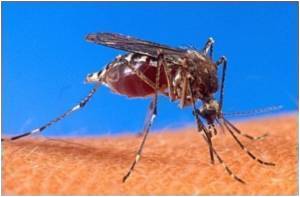
Malaria remains a serious global health problem, killing more than one million people per year. The World Health Organization began efforts to eliminate malaria in the mid-20th century and had made significant strides in curtailing the disease. However, by the 1990s, malaria was again on the rise due to the emergence of drug-resistant parasites, and today much remains unknown about the genetic basis of resistance.
Looking for Clues to Antibiotic Resistance in the Genome
Elizabeth Winzeler, a Scripps Research associate professor and member of the Genomics Institute of the Novartis Research Foundation (GNF), and colleagues from the United States and Peru expected that by using genomic methods to analyze the malaria-causing parasite Plasmodium falciparum in a geographic area where malaria had been previously eradicated and recently re-emerged, they could identify positively selected regions of the genome that contained genes underlying drug resistance.
The team chose to study malaria parasites in Iquitos, a city in the Amazonian lowlands of Peru. It was an ideal choice for studying the genomic features of drug resistance as malaria was eliminated there in the 1960s, but re-emerged in the 1990s.
Using microarrays to scan the genome of P. falciparum isolated from 14 patients in Iquitos, Winzeler's group analyzed and compared genetic variation between the isolates, searching for selected regions.
Advertisement
Winzeler explained that although the high similarity of the parasite genomes hindered their efforts to identify regions under selection, their analysis uncovered critical findings that could have a significant impact on the diagnosis and treatment of malaria.
Advertisement
The team's data indicated that there is significant genetic instability in regions near the telomere, the repetitive DNA sequences that protects the ends of chromosomes from damage. Because a malaria rapid diagnostic test relies on detection of a protein encoded by a subtelomeric gene, use of these tests could result in missed diagnoses.
Furthermore, the work identified a gene that could change the course of treatment for some infected patients. A mutation was found in a non-coding RNA gene that the authors predicted would confer resistance to the antibiotic clindamycin, a lincosamide drug commonly administered in combination with quinine to treat pregnant women and infants for malaria in Peru.
The researchers then tested the Peruvian isolates for clindamycin sensitivity and confirmed that the parasites were resistant. This was the first-ever demonstrated case of clindamycin resistance. "The data also show parasites could be resistant to related compounds, such as mirincamycin, that are under development," Winzeler said.
Winzeler noted that although the geographic scope of clindamycin resistance must be examined further, this work strongly suggests that treating pregnant women and infants with clindamycin and similar antimalarial lincosamide drugs should be reconsidered, as the drugs may not be effective.
"Our findings emphasize the importance of placing new antimalarial compounds in the drug development pipeline," added Winzeler, "especially compounds with novel mechanisms of actions."
Source-Eurekalert











